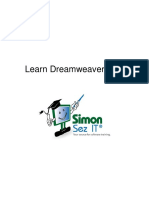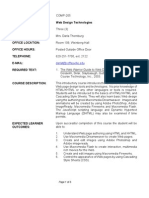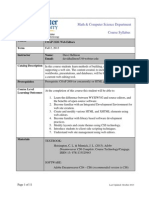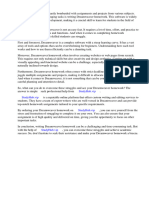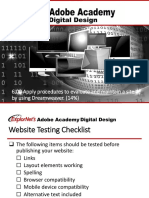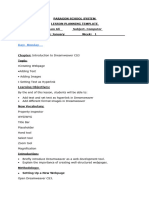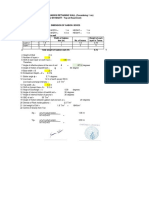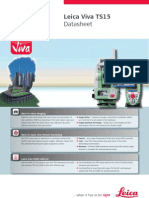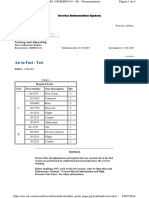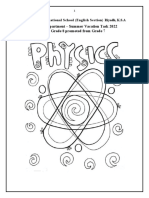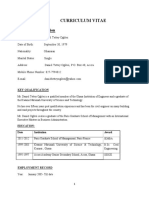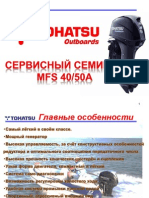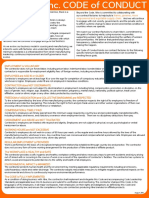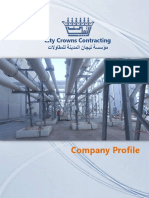Adobe Web Communication using Dreamweaver CS5 Exam and objectives
After taking the exam, your score is electronically reported. Please allow 2-4 weeks from the date you pass the exam to receive your ACA Welcome Kit.
Exam Structure
The following lists the topic areas for the exam: 1. Setting project requirements 2. Planning site design and page layout 3. Understanding the Adobe Dreamweaver CS5 interface 4. Adding content by using Dreamweaver CS5 5. Organizing content by using Dreamweaver CS5 6. Evaluating and maintaining a site by using Dreamweaver CS5
Number of Questions and Time
41 questions 50 minutes
Exam Objectives
Domain 1.0 Setting Project Requirements
1.1 1.2 1.3 1.4 1.5 1.6 Identify the purpose, audience, and audience needs for a website. Identify web page content that is relevant to the website purpose and appropriate for the target audience. Demonstrate knowledge of standard copyright rules (related terms, obtaining permission, and citing copyrighted material). Demonstrate knowledge of website accessibility standards that address the needs of people with visual and motor impairments. Make website development decisions based on your analysis and interpretation of design specifications. Understand project management tasks and responsibilities.
Domain 2.0 Planning Site Design and Page Layout
2.1 2.2 2.3 2.4 2.5 2.6 Demonstrate general and Dreamweaver-specific knowledge of best practices for designing a website, such as maintaining consistency, separating content from design, using standard fonts, and utilizing visual hierarchy. Produce website designs that work equally well on various operating systems and browser versions/configurations. Demonstrate knowledge of page layout design concepts and principles. Identify basic principles of website usability, readability, and accessibility. Demonstrate knowledge of flowcharts, storyboards, and wireframes to create web pages and a site map (site index) that maintain the planned website hierarchy. Communicate with others (such as peers and clients) about design and content plans.
Adobe Web Communication using Dreamweaver CS5
2010 Adobe Systems Incorporated
�Domain 3.0 Understanding the Adobe Dreamweaver CS5 Interface
3.1 3.2 3.3 3.4 3.5 3.6 Identify elements of the Dreamweaver interface. Use the Insert bar. Use the Property inspector. Use the Assets panel. Use the Files panel. Customize the workspace
Domain 4.0 Adding Content by Using Dreamweaver CS5
4.1 4.2 4.3 4.4 4.5 4.6 4.7 4.8 4.9 4.10 4.11 Define a Dreamweaver site. Create, title, name, and save a web page. Add text to a web page. Insert images and apply alternative text on a web page. Link web content, using hyperlinks, e-mail links, and named anchors. Insert rich media, such as video, sound, and animation in Flash format. Insert navigation bars, rollover images, and buttons created in Fireworks on a web page. Build image maps. Import tabular data to a web page. Import and display a Microsoft Word or Microsoft Excel document to a web page. Create forms.
Domain 5.0 Organizing Content by Using Dreamweaver CS5
5.1 5.2 5.3 5.4 5.5 5.6 5.7 5.8 Set and modify document properties. Organize web page layout with relative and absolutely-positioned div tags and CSS styles. Modify text and text properties. Modify images and image properties. Create web page templates. Use basic HTML tags to set up an HTML document, format text, add links, create tables, and build ordered and unordered lists. Add head content to make a web page visible to search engines. Use CSS to implement a reusable design.
Domain 6.0 Evaluating and Maintaining a Site by Using Dreamweaver CS5
6.1 6.2 6.3 6.4 6.5 6.6 Conduct technical tests. Identify techniques for basic usability tests. Identify methods for collecting site feedback. Present web pages to others (such as team members and clients) for feedback and evaluation. Manage assets, links, and files for a site. Publish and update site files to a remote server.
Adobe Web Communication using Dreamweaver CS5
2010 Adobe Systems Incorporated











